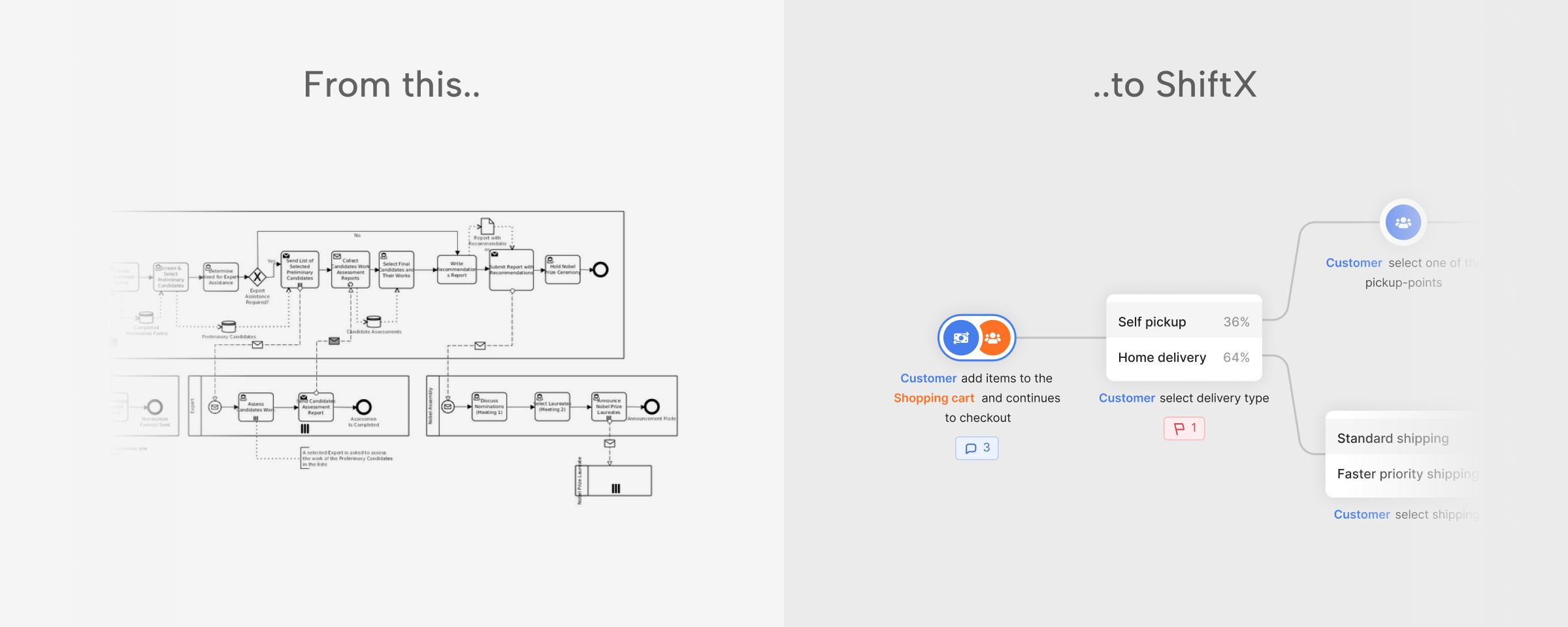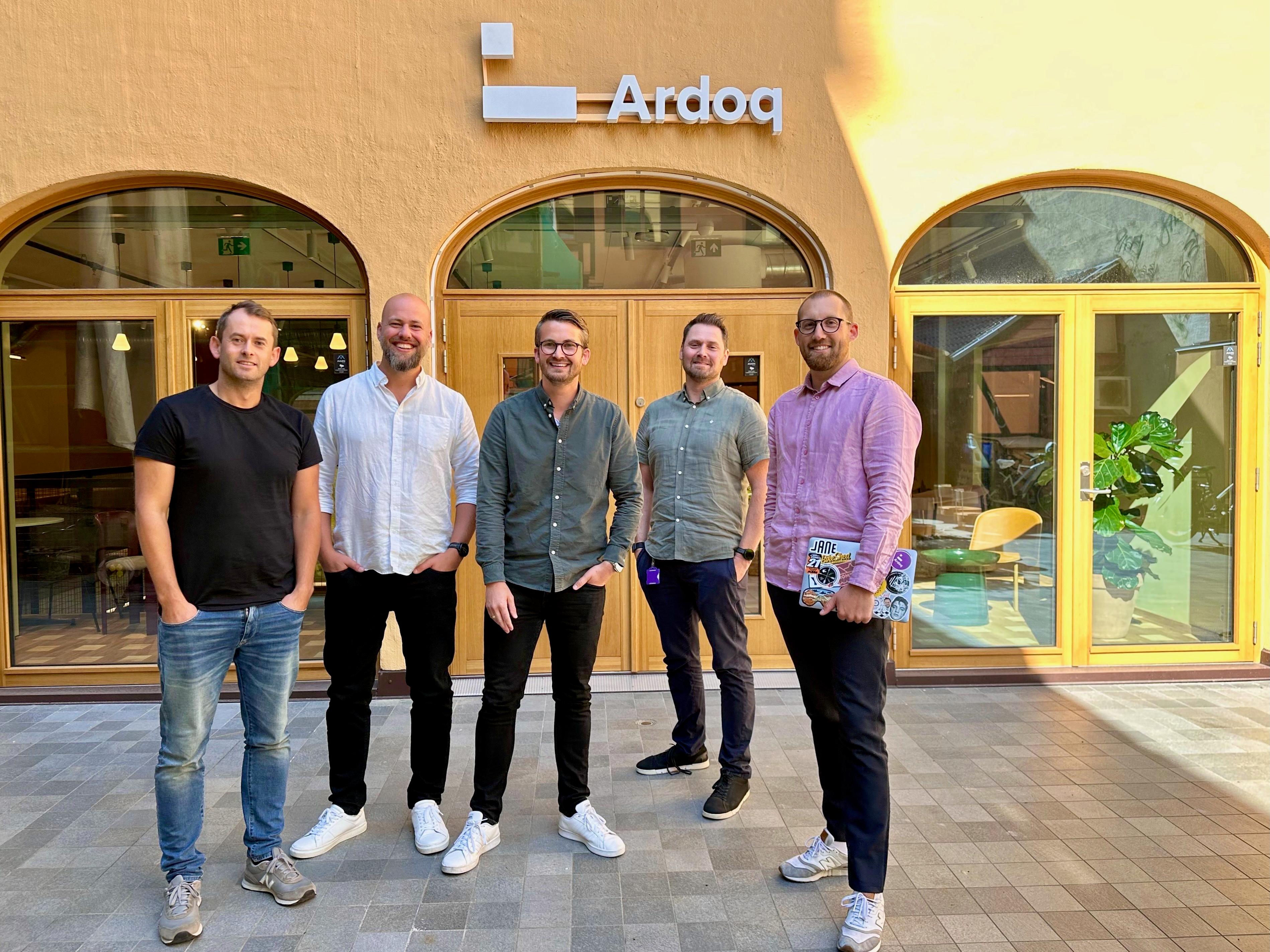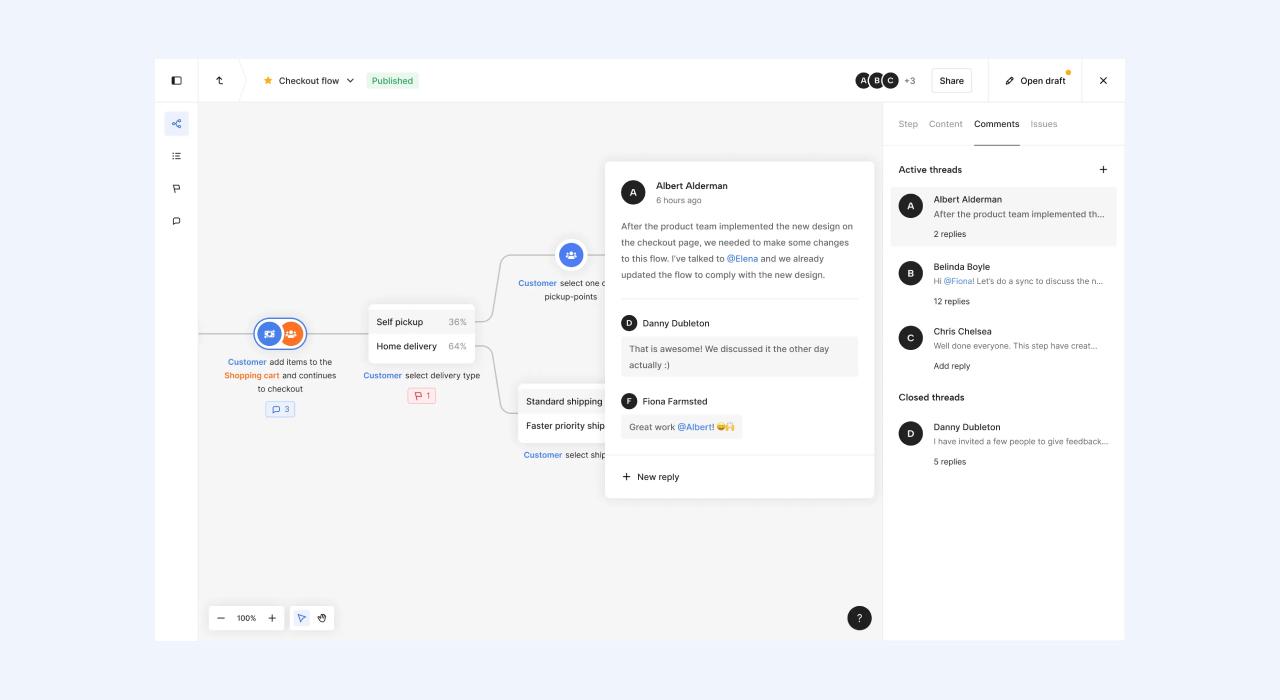
3 reasons why collaboration is essential for success in process management

Values you get by involving people
Including stakeholders with a role or interest in the process is required to succeed.
Key knowledge and accuracy with no assumptions
In organizations, much of the knowledge and know-how is distributed across the minds of its members. From CEO and managers to trainees, each individual holds unique insight and expertise. They all have hands-on experience and knowledge from their perspective that may not be obvious to the rest of the organization.
It is key to recognize that our colleagues are not just task-performers, but are in possession of knowledge that can be used to improve the organization. Every person, regardless of their position, holds a piece of the puzzle that completes the larger picture of the organization's knowledge.
Process mapping aims to capture the current state and identify areas for improvement. By capturing the key knowledge from the people involved in a process, you can ensure that the accuracy of the process map is high.
If a process map is inaccurate or outdated, the potential effect of utilizing the map greatly decreases or vanishes altogether. When a map is inaccurate it fails to engage and the risk of using it skyrockets.
Feeling of ownership and increased engagement
Involving people in process mapping has many great benefits. It promotes teamwork. It brings a sense of meaning to the participants. People are more likely to share their ideas. You develop a can-do attitude and greatly improve willingness for change. And it creates ownership of the process and the organization itself.
Engagement also leads to better job satisfaction. When members of an organization experience that their contributions are valued and lead to improvements, it creates a positive feedback loop that further drives engagement. Engaged employees are more productive, more innovative, and more likely to stay with the company long-term, reducing turnover costs and contributing to a better work environment.
Willingness for change
Change is a part of any growing organization. A decision made in the boardroom does not automatically guarantee successful implementation in the organization. The people that will implement the change are the people who should know, understand and be motivated for it.
By including them when mapping processes and visualizing pain points, they get a better idea of why change needs to happen and the chance of success greatly improves. You also get the benefit of better ownership and overall understanding and willingness for change.
Why process maps are not being used
Research conducted in 2017 found that in 44% of companies few or none of the process maps are ever used by employees.
Why are they necessary?
Many people wonder if mapping out the details of a process is even necessary. This could be fueled by prior experiences where process maps were made but never fully utilized.
Process mapping has to be about more than just documenting for documentation's sake. That quickly becomes unsustainable and demoralizing. The potential is huge if implemented and done correctly.
Outdated process maps
Once a process map is outdated it quickly loses its value. If the job of updating the process map is slow or cumbersome people quickly find other ways to solve their pain and do their job. This results in many different ways of doing things and unorganized scattered knowledge. Companies should ensure they have a simple way to map and keep processes up to date. When your tools and methods are outdated it is no surprise your process maps are outdated.
Complex and time consuming

Most people avoid process mapping due to the complexity of the tools, notation or the excessive time needed. A notation like BPMN uses specialized symbols and terminology that in itself requires time and training to understand. This added complexity leads to confusion, misunderstandings and can result in team members avoiding process mapping if they can.
So the very tools made to make business processes more efficient get in the way of anything getting done at all. Simply because the barrier of entry is too high.
Unawareness
Lastly, another common reason why process maps are underutilized is that most people don’t even know they exist. Probably due to the issues mentioned before, but could also be due to them being managed by a select few gatekeepers or a culture of secrecy and silos instead of a culture of transparency and knowledge sharing.
How to get started with process based knowledge-sharing
Start with one process
Select a process that you are well familiar with and where you have key responsibility. Examples would be a reimbursement process, onboarding process or any other process that has an impact on many people. Start mapping the process based on your knowledge and insight.
Identify other stakeholders
When at any point you find steps or areas you are unsure or unfamiliar with, invite the people who have key knowledge to take part in the mapping. Let them contribute with their insight and experience, instead of you guessing or assuming. There might be details or improvement opportunity that you would not learn or understand otherwise.
Setting up a workshop where you map together with your co-workers is another valuable way to go. This often turns into an exciting learning opportunity for everyone involved as the sharing of knowledge usually leads to the uncovering of both small and big improvement ideas.
Share and utilize
Use the process whenever possible. In meetings, presentations, emails, workshops or in your daily work. This makes it visible to your co-workers.
To make it even more accessible, make the process available in solutions your co-workers already use. Embed the process into your intranet (MS teams, Sharepoint, Slack, Notion, etc) for greater reach and transparency.
Improve and keep up to date
Encourage stakeholders to add comments to the process if they have suggestions for improvement, or issues if there are bottlenecks that need to be fixed.
Try for free
ShiftX is made exactly for this reason. To involve everyone that takes part in any process. Try it out for free.

